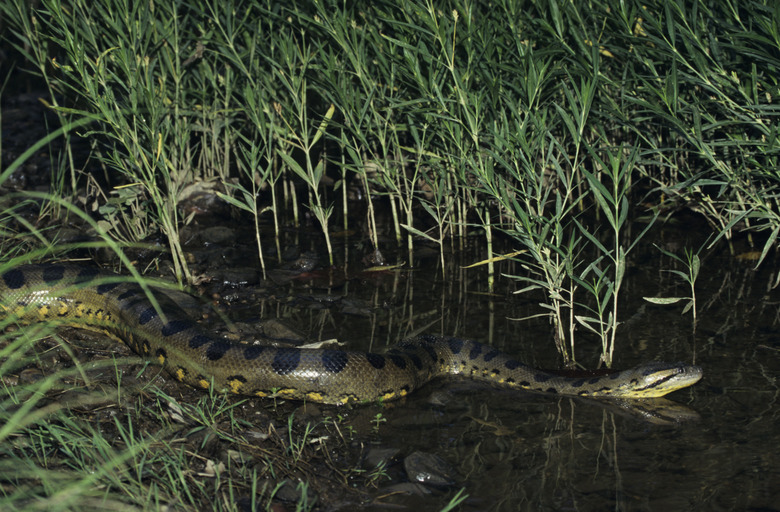The Guyana Ecosystem
Guyana is located on the northeastern coast of South America, bordered by Brazil on the south, Venezuela on the west and Suriname on the east. A former British colony, Guyana gained independence in 1966. The narrow coastal strip bordering the Atlantic Ocean holds 90 percent of the country's population, with 80 percent of the interior high plateaus and mountains occupied by mostly pristine tropical rainforest. Other ecosystems include swamps and wetlands, savanna, and several types of forests, resulting in a high level of biodiversity and unique endemic animals and plants.
Tropical Forest
Tropical Forest
More than 6,500 known species of plants inhabit the tropical rainforest, half of them endemic, or living only in Guyana. In the center of the country is the Iwokrama International Centre for Rainforest Conservation and Development, containing about 1,400 square miles of untouched rainforest set aside for research. It is managed under an agreement with a British private equity firm that purchased the rights to its environmental services. The rainforest contains at least 650 species of birds. Mammals such as jaguar, sloths, giant armadillos and capuchin monkeys inhabit the forests. Plants include orchids, bromeliads, tropical flowering trees and Guyana's national flower, the Amazonian water lily.
Wetlands
Wetlands
The low-lying coastal areas of about 5,000 square miles contain mangrove forests, swamps and much of the cultivated lands. Mangrove forests were degraded due to logging and erosion, but the government is mounting a restoration project in concert with the European Union. Mangrove forests are home to manatees, scarlet ibis, spectacled caiman, shrimp, crabs and fish. Sandy beaches are nesting sites for sea turtles. Swamps occur in a line between the coastal plain and the white sandy interior hills.
Savannahs
Savannahs
Interior savannas occur in the northeast along the Berbice River and the Rupununi Savanna in the south. The Rupununi receives about 70 inches of rain annually, mostly between May through August, when most of the land floods. Grass grows during the dry season. The Rupununi is rich in plant and animal life, with about 500 species of birds, 120 kinds of reptiles and amphibians, 105 species of mammals and 1,500 species of plants. The rainy season has heightened activity for birds, snakes, frogs and butterflies. Many orchids also bloom then. During the dry season, caiman, capybara, and otters are prominent.
Other Forests
Other Forests
Besides the tropical rainforest ecosystem, Guyana contains dry evergreen forests and montane forests, also called cloud forests. Dry evergreen forests grow in the leached white sand belt located from the Pakaraima escarpment and through central Guyana. More than 300 species of birds live here, including tanagers, owls, nocturnal potoos and finches. Montane forests include sub-montane forests growing between 1,640 and 5,000 feet, as well as montane forests above 1,500 meters. Some distinctive animals of cloud forests include the bright orange Guianian cock-of-the-rock, the harpy eagle and the olingo, a raccoon relative.
References
- The Bradt Travel Guide: Guyana; Kirk Smock
- Guiana Shield Facility: News: Private Equity Firm Buys Rights to Ecosystem Services of Guyana Rainforest
- Library of Congress Federal Research Division: Country Studies: Guyana
- Guyana/2 Bradt; Kirk Smock
- United Nations Food and Agriculture Organization: Forestry Department: Global Forest Resources Assessment 2005: Guyana
Cite This Article
MLA
Csanyi, Carolyn. "The Guyana Ecosystem" sciencing.com, https://www.sciencing.com/guyana-ecosystem-12833/. 24 April 2017.
APA
Csanyi, Carolyn. (2017, April 24). The Guyana Ecosystem. sciencing.com. Retrieved from https://www.sciencing.com/guyana-ecosystem-12833/
Chicago
Csanyi, Carolyn. The Guyana Ecosystem last modified August 30, 2022. https://www.sciencing.com/guyana-ecosystem-12833/
